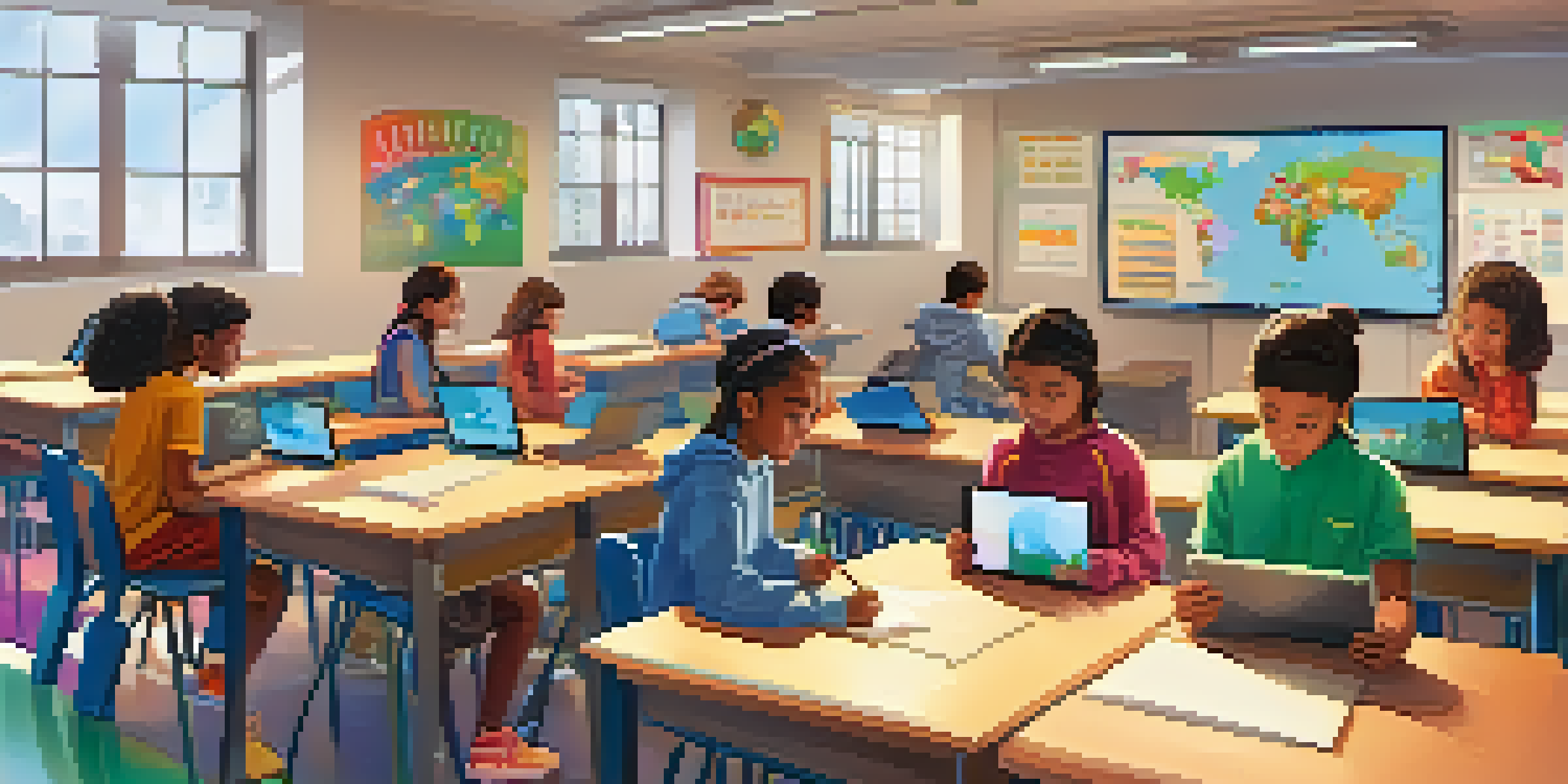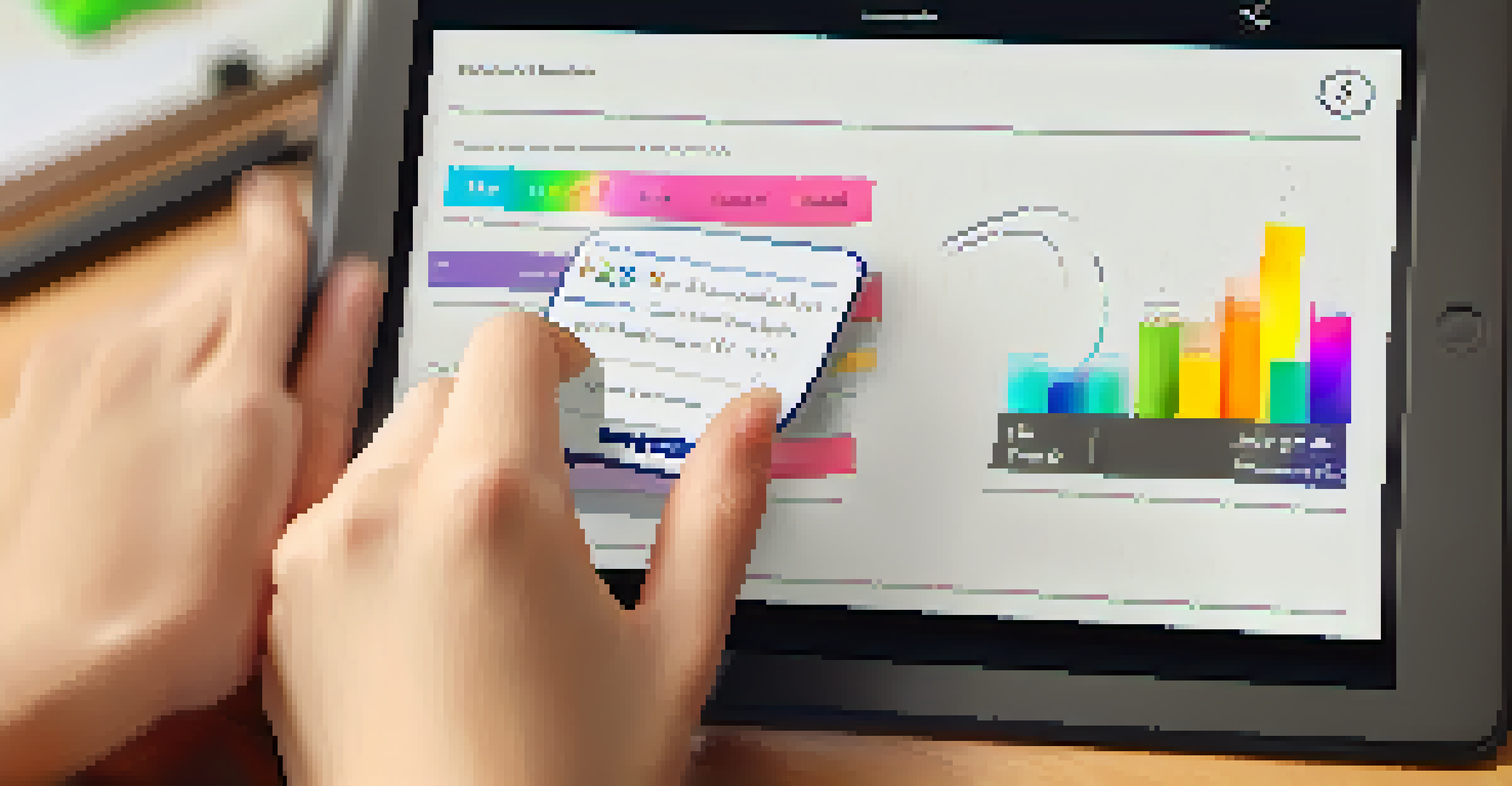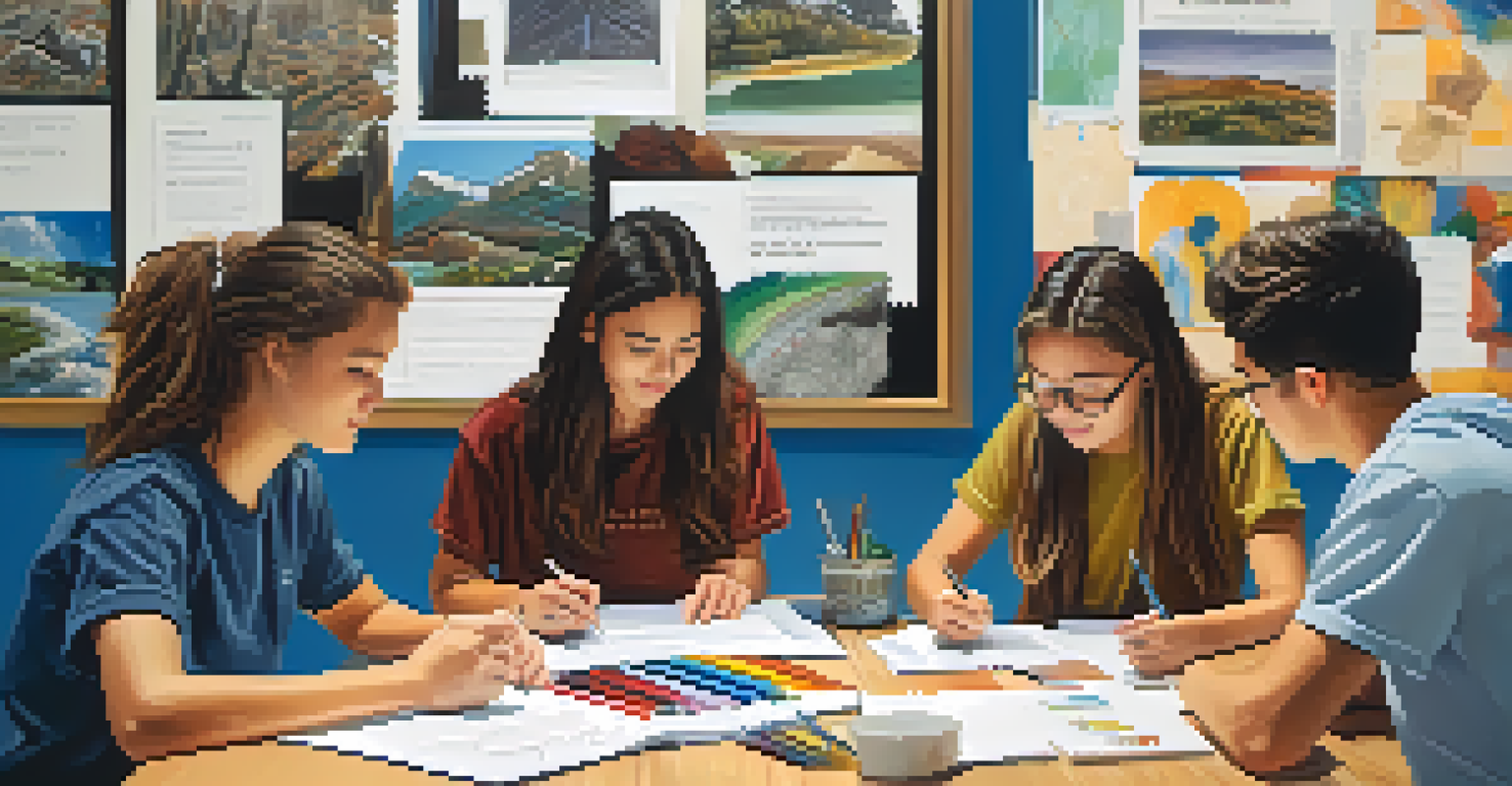The Benefits of Real-Time Feedback in Digital Assessments

Understanding Real-Time Feedback in Digital Assessments
Real-time feedback refers to the immediate responses learners receive during assessments. This approach contrasts with traditional methods, where feedback can take days or weeks to arrive. By integrating real-time feedback, educators can provide insights that help students understand their performance instantly, fostering a more interactive learning experience.
Feedback is the breakfast of champions.
Imagine taking a quiz and receiving instant tips on incorrect answers as you go. This immediate interaction not only keeps learners engaged but also helps them to correct misunderstandings on the spot. Such proactive learning environments encourage students to stay motivated and involved in their educational journey.
With the rise of digital platforms, real-time feedback has become more accessible. These tools allow instructors to monitor student progress continuously and adjust their teaching strategies accordingly. This adaptability makes learning more personalized and effective, catering to individual needs.
Enhancing Student Engagement Through Immediate Insights
Engagement is crucial for effective learning, and real-time feedback significantly boosts it. When students receive instant responses, they are more likely to stay focused and invested in their tasks. This immediate connection between effort and outcome can transform the learning experience into an exciting challenge rather than a tedious obligation.

For instance, consider a student who struggles with a math problem. If they receive immediate feedback on their approach, they can quickly understand their mistakes and try again. This iterative process not only enhances their comprehension but also instills a sense of accomplishment with each correction made.
Instant Feedback Enhances Learning
Real-time feedback provides immediate insights that help students understand and correct their mistakes during assessments.
Moreover, the gamification of learning through instant feedback can make assessments more enjoyable. By turning learning into a dynamic process, educators can create a vibrant atmosphere where students are eager to participate and excel.
Fostering a Growth Mindset with Continuous Feedback
Real-time feedback nurtures a growth mindset, which is the belief that abilities can be developed through dedication and hard work. When students receive feedback promptly, they can view challenges as opportunities for growth rather than threats to their intelligence. This shift in perspective is vital for long-term educational success.
The greatest danger in times of turbulence is not the turbulence; it is to act with yesterday's logic.
Take, for example, a student who learns they misunderstood a concept during an assessment. If they receive constructive feedback right away, they can approach the topic with renewed determination. This immediate correction encourages resilience and a willingness to tackle difficult subjects head-on, fostering an environment of continuous improvement.
Furthermore, by normalizing feedback as part of the learning process, educators help students become more receptive to criticism. This openness is essential for personal and academic growth, as it encourages learners to seek help and strive for excellence.
Improving Learning Outcomes with Timely Adjustments
One of the most significant advantages of real-time feedback is its ability to improve learning outcomes. By receiving immediate insights, students can adjust their study habits and strategies on the fly. This adaptability ensures they can focus on areas that require more attention, leading to a more efficient learning experience.
For instance, if a student struggles with a specific topic, real-time feedback can highlight this issue immediately. They can then seek additional resources or assistance while the topic is still fresh in their minds, minimizing knowledge gaps before they widen.
Growth Mindset through Feedback
Receiving prompt feedback encourages students to view challenges as opportunities for growth, fostering resilience and a willingness to learn.
Additionally, educators can use the data from real-time feedback to assess overall class performance. This information allows them to tailor their teaching methods and materials, ensuring that all students receive the support they need to succeed.
Encouraging Self-Assessment and Reflection in Learners
Real-time feedback promotes self-assessment, encouraging learners to reflect on their understanding and performance continually. When students receive instant insights, they can evaluate their thought processes and identify areas for improvement. This self-reflection is a critical component of effective learning.
Imagine a student reviewing their answers as they receive feedback. This practice not only helps them recognize patterns in their mistakes but also empowers them to take ownership of their learning journey. By analyzing their performance, students can develop critical thinking skills and become more autonomous learners.
Moreover, incorporating self-assessment with real-time feedback can lead to deeper learning. When students actively engage in evaluating their work, they cultivate a sense of responsibility that extends beyond the classroom.
Fostering Collaboration Through Peer Feedback
Real-time feedback also paves the way for collaborative learning experiences. By encouraging peer feedback during assessments, students can learn from one another and develop a sense of community. This collaboration enriches the learning environment, making it more inclusive and supportive.
For instance, when students work in groups and provide feedback to each other, they can gain diverse perspectives. This exchange of ideas not only reinforces their understanding but also builds communication skills that are essential in today's interconnected world.
Collaboration Boosts Learning Outcomes
Encouraging peer feedback creates a supportive learning environment where students learn from each other and build essential communication skills.
Additionally, collaborative feedback can create a safe space for students to express their thoughts without fear of judgment. This supportive atmosphere fosters trust, encouraging learners to engage more openly and constructively with their peers.
Technological Tools Supporting Real-Time Feedback
The implementation of real-time feedback in digital assessments is heavily supported by technological tools. Many platforms now offer features that allow educators to provide instant responses and track student progress effortlessly. These tools help streamline the feedback process, making it more efficient.
Consider applications that feature instant quizzes or interactive exercises. These platforms often provide immediate feedback, allowing students to see where they stand in real-time. Such technology not only enhances learning but also enables educators to focus on facilitating rather than just assessing.

Moreover, advancements in artificial intelligence are paving the way for even more personalized feedback. By analyzing student performance patterns, AI can offer tailored insights that cater to individual learning styles, ensuring that every student receives the support they need.